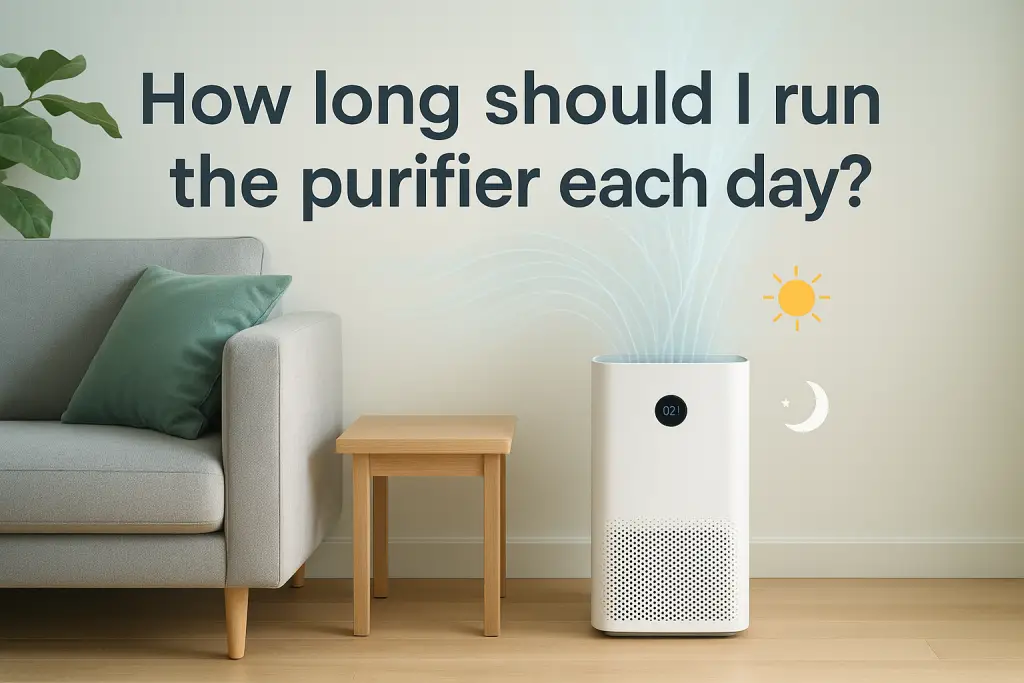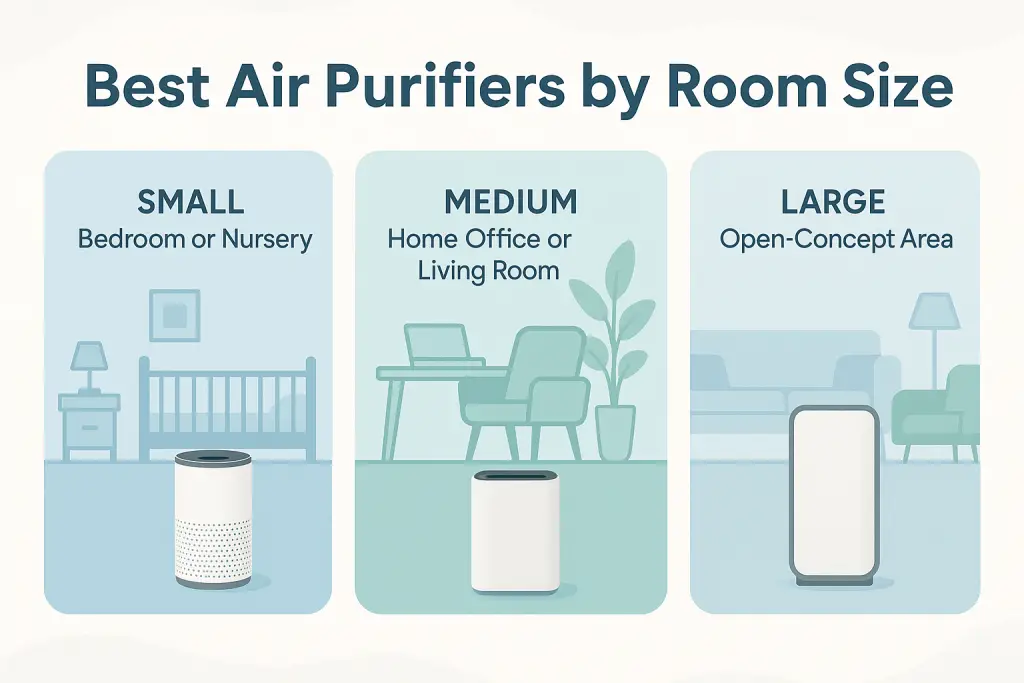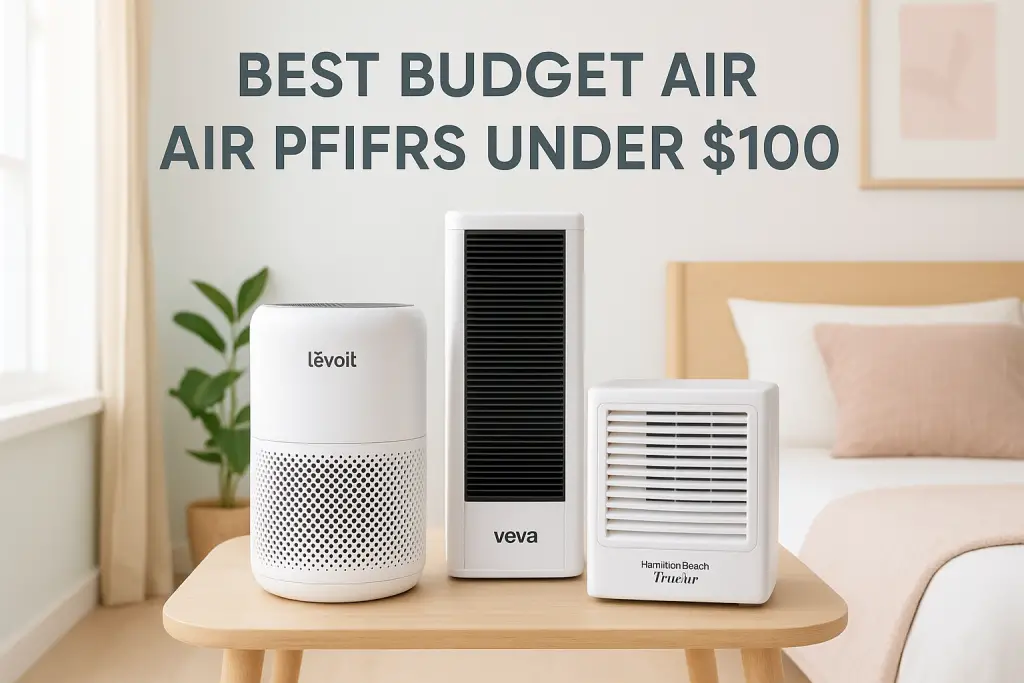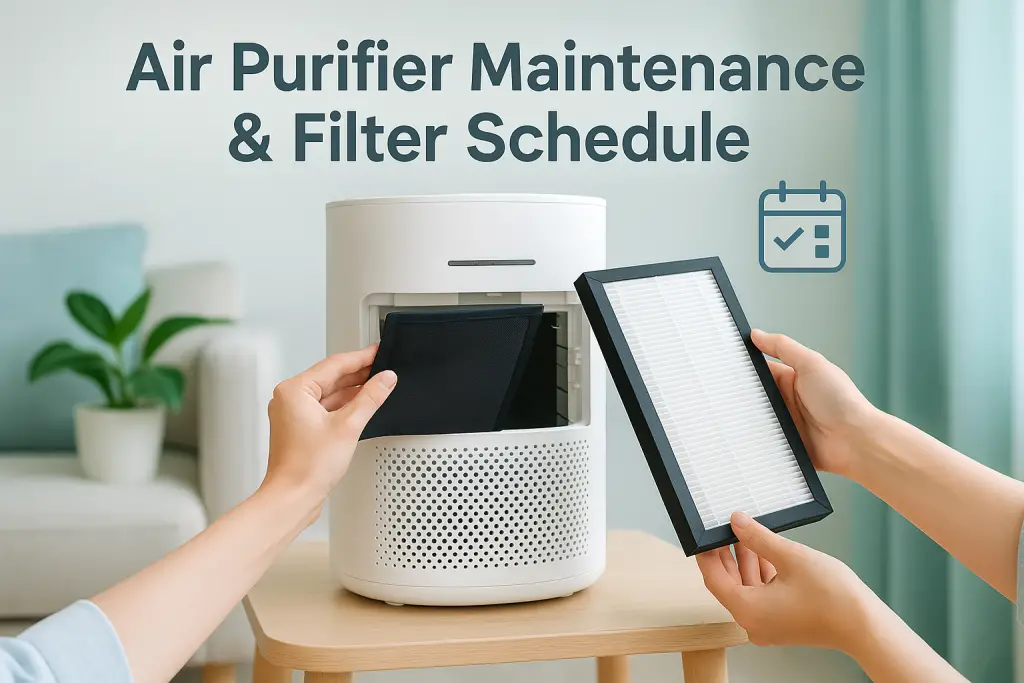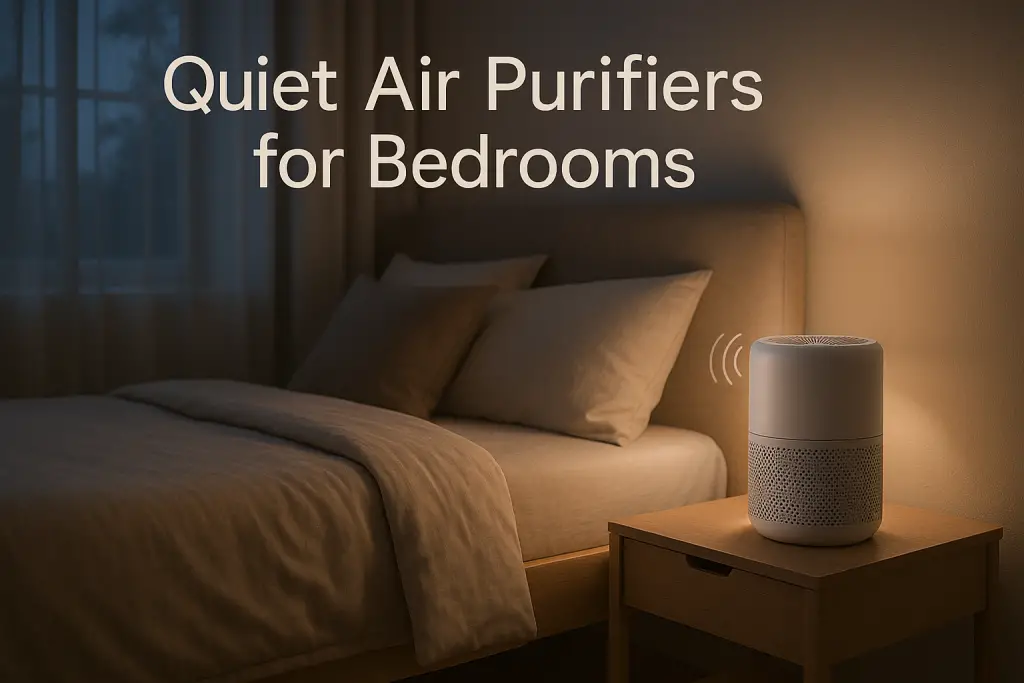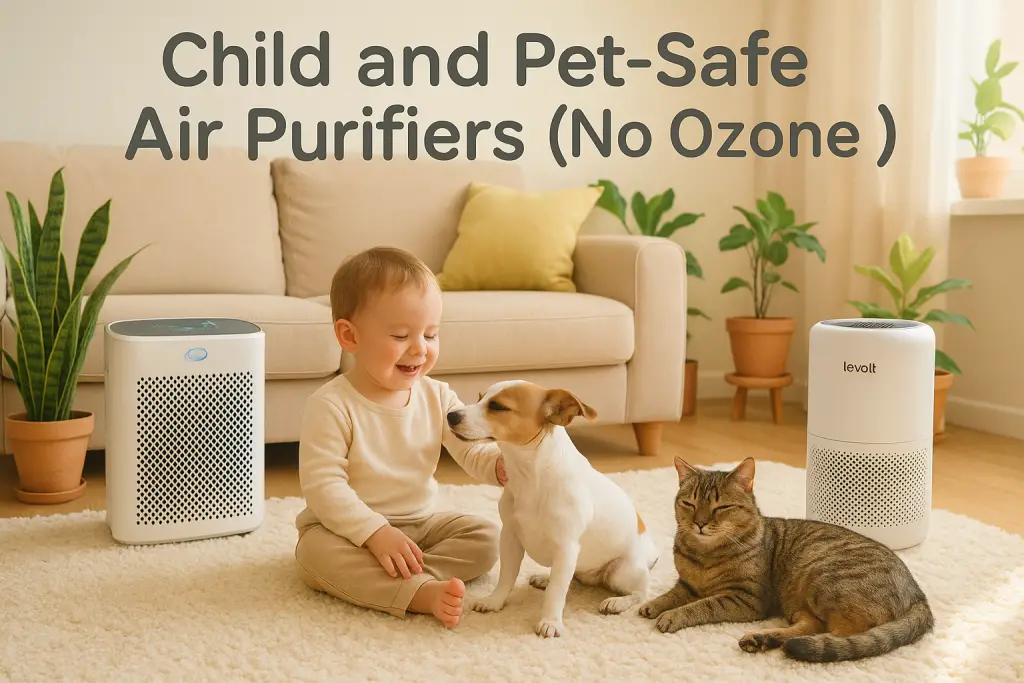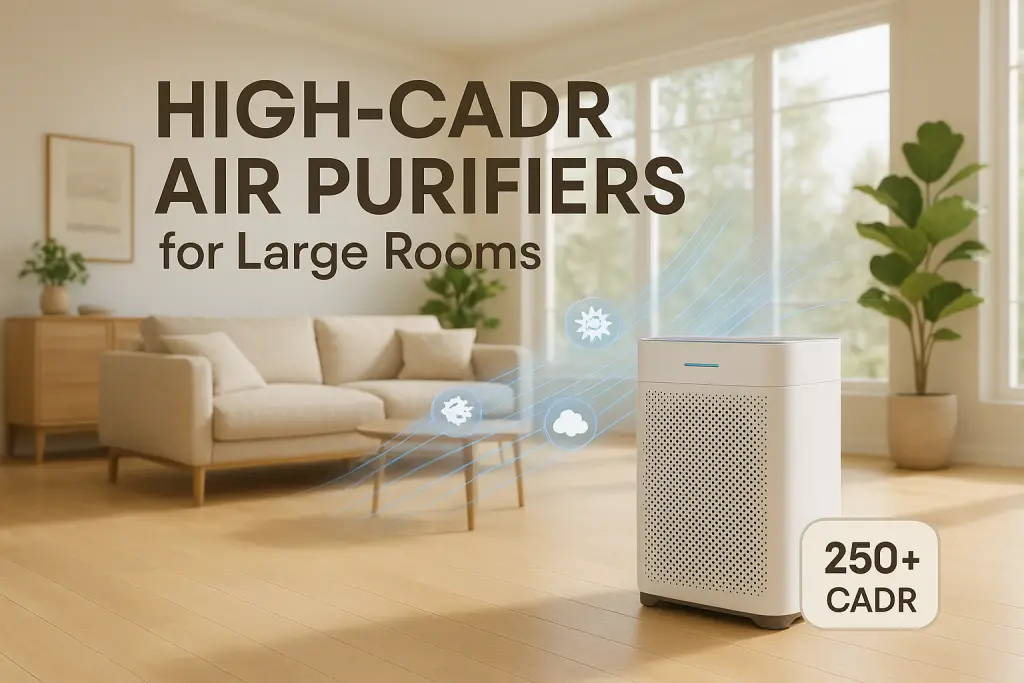You should run your air purifier 24 hours a day for optimal indoor air quality in most situations. While this might seem excessive, continuous operation ensures your indoor environment remains consistently clean. Air pollution doesn’t take breaks – it’s constantly being generated in your home through cooking, cleaning, pets, and outside pollutants seeping in. This guide will help you understand why continuous operation matters and how to balance effectiveness with practical concerns like energy usage.
The Bottom Line: Should Air Purifiers Run 24/7?
For most homes and situations, running your air purifier 24 hours a day, 7 days a week is the recommended approach for maintaining optimal indoor air quality. Indoor air pollution is continuous, not intermittent, which means your air purifier needs to work constantly to maintain clean air. When you turn off your purifier, pollution levels begin to rise almost immediately.
Benefits of 24/7 operation include:
- Consistent air quality throughout your home
- Prevention of pollutant buildup
- More effective allergen and particle removal
- Reduced respiratory irritants at all times
While continuous operation is ideal, some concerns include energy consumption, noise levels, and filter lifespan. In certain situations, intermittent operation might be sufficient, but for most homes, especially those with allergy sufferers or in polluted areas, continuous filtration provides significant health benefits that outweigh these concerns.
Why Continuous Operation Matters: The Science of Indoor Air Pollution
Indoor air pollution isn’t a static problem. It’s continuously generated through everyday activities, entering from outside, and accumulating over time. Understanding this dynamic nature helps explain why running your air purifier continuously provides significant benefits.
According to the EPA, indoor air can be 2-5 times more polluted than outdoor air. This pollution comes from numerous sources that operate constantly: cooking releases particulate matter, furniture off-gasses VOCs, pets shed dander, and humans shed skin cells. Even “clean” homes experience this continuous pollution cycle.
When your air purifier runs continuously, it captures these pollutants as they’re generated. When turned off, pollutants accumulate until the purifier is turned back on, creating a “sawtooth” pattern of air quality instead of maintaining consistently clean air.
How Indoor Air Pollution Works: A Continuous Cycle
Your home’s air quality is in constant flux, with pollutants being introduced, circulated, and settling in a continuous cycle that doesn’t stop—even when you’re not actively generating pollution.
Indoor pollution comes from three main sources:
- Generated inside (cooking, cleaning, pets)
- Entering from outside (through doors, windows, ventilation)
- Resuspension of settled particles (walking, vacuuming, moving objects)
Research shows that common activities dramatically impact air quality. Cooking can increase particulate matter by 5-100 times baseline levels. Even walking across a carpet resuspends settled dust into breathable air. This continuous pollution cycle means air quality management requires constant attention.
What Happens When You Turn Off Your Air Purifier
When you turn off your air purifier, indoor air quality begins to degrade almost immediately, with pollution levels rebounding significantly within just 1-2 hours.
Studies tracking air quality after turning off purifiers show:
- After 30 minutes: Particulate matter increases by 20-30%
- After 1 hour: Levels can reach 50% of pre-filtration readings
- After 2-3 hours: Air quality often returns to baseline (unpurified) levels
The rebound rate varies based on several factors including home size, activity level, and outdoor pollution levels. Smaller rooms with more activity experience faster pollution rebounds. This data confirms that intermittent operation creates peaks and valleys in your air quality rather than maintaining a consistently healthy environment.
How Different Pollutants Are Affected by Air Purifier Runtime
Not all air pollutants are created equal. Some are removed quickly by air purifiers, while others require longer runtime for effective removal. Understanding these differences helps explain why continuous operation is often necessary.
| Pollutant Type | Removal Speed | Continuous Operation Need |
|---|---|---|
| Large Particles (dust, pet hair) | Relatively quick (30-60 mins) | Medium – reintroduced regularly |
| Small Particles (PM2.5) | Moderate (1-2 hours) | High – constant outdoor infiltration |
| Allergens (pollen, dander) | Moderate (1-2 hours) | High – continuous generation |
| VOCs (gases, odors) | Slow (2-24 hours) | Very High – continuous off-gassing |
HEPA filters are excellent at trapping particulate matter but require air to circulate through them multiple times for thorough cleaning. Activated carbon filters, which address VOCs and odors, work through adsorption that happens gradually over time. The longer these filters run, the more pollutants they can capture.
For homes with new furniture, recent renovations, or persistent odor issues, continuous operation becomes even more important as these sources emit VOCs constantly for weeks or months.
Will Running My Air Purifier 24/7 Cost a Fortune? Energy Consumption Analysis
One of the biggest concerns about running an air purifier continuously is the potential impact on your electricity bill. Let’s break down the actual costs with real calculations to help you make an informed decision.
Most modern air purifiers are surprisingly energy-efficient. A typical air purifier uses between 30-100 watts, similar to a standard light bulb. Here’s how to calculate your cost:
Daily Cost = (Watts ÷ 1000) × 24 hours × Electricity Rate ($/kWh)
For example:
- Small purifier (30W): (30 ÷ 1000) × 24 × $0.15 = $0.11 per day ($3.30/month)
- Medium purifier (50W): (50 ÷ 1000) × 24 × $0.15 = $0.18 per day ($5.40/month)
- Large purifier (80W): (80 ÷ 1000) × 24 × $0.15 = $0.29 per day ($8.70/month)
For perspective, this is significantly less than most household appliances. A refrigerator typically costs $15-20/month, while an air conditioner can cost $30-50/month during summer.
Modern air purifiers often include energy-saving features like ECO mode or smart sensors that reduce fan speed when air quality is good, further reducing energy consumption by 30-50% compared to constant high-speed operation.
Energy Consumption Calculator: Estimate Your Costs
Use this simple formula to calculate how much your specific air purifier costs to operate continuously, allowing you to make an informed decision based on your actual situation.
- Find your purifier’s wattage (check the label or manual)
- Divide by 1000 to convert to kilowatts
- Multiply by 24 for daily hours of operation
- Multiply by your electricity rate (national average is about $0.15/kWh)
- Multiply by 30 for monthly cost
For example, a 45W purifier operating continuously costs:
(45 ÷ 1000) × 24 × $0.15 × 30 = $4.86 per month
When weighing this cost against potential health benefits, especially for allergy sufferers or those in polluted areas, continuous operation often proves worth the minimal electricity expense.
Scenario-Based Recommendations: How Long Should I Run the Purifier Each Day?
While 24/7 operation is generally ideal, your specific living situation might call for a customized approach. Here are detailed recommendations for different scenarios and air quality concerns.
For Allergy and Asthma Sufferers
If you or family members have allergies or asthma, continuous air purifier operation is strongly recommended. Allergens like pollen, dust mites, and pet dander constantly circulate and settle in your home. Research shows that consistent filtration significantly reduces symptom triggers.
Run time: 24/7 operation, especially during high pollen seasons or symptom flare-ups
Settings: Medium to high fan speed during peak allergy seasons, possibly lower at night if noise is a concern
Additional tip: Place the purifier in bedrooms where you spend 6-8 hours breathing while sleeping
For Homes with Pets
Pet owners should aim for continuous operation. Pets constantly shed dander, hair, and bring in outside pollutants. Studies show pet allergens can remain airborne for hours and stick to surfaces throughout your home.
Run time: 24/7, with higher speeds after vacuuming or grooming
Settings: Medium setting with boost to high when pets are most active
For Urban Environments
City dwellers face constant pollution from traffic, industrial activities, and neighboring buildings. Outdoor pollutants continuously enter even well-sealed homes.
Run time: 24/7, especially if near busy roads or industrial areas
Settings: Medium to high during rush hour or high pollution alerts
Additional consideration: Consider complementing your air purifier with masks when outdoors during high pollution days
Special Circumstances: When 24/7 Operation Is Most Critical
While continuous operation is generally recommended, there are specific situations where 24/7 operation becomes absolutely essential for maintaining healthy air quality.
- Wildfire season: During active wildfires, run your purifier continuously on high setting. Smoke particles are extremely small and numerous, requiring constant filtration.
- Home renovations: Construction dust and VOCs from new materials can linger for weeks. Run your purifier 24/7 during and for 2-4 weeks after renovation work.
- Newborns or elderly family members: Those with developing or compromised immune systems benefit significantly from consistently clean air.
- Mold remediation: During and after mold issues, continuous filtration helps capture airborne spores.
- Winter months: When homes are sealed tight, indoor pollutants accumulate faster, making continuous filtration more important.
In these situations, the health benefits of continuous operation far outweigh energy cost concerns.
Intermittent Operation: When and How It Can Work
If 24/7 operation isn’t possible for your situation, strategic intermittent operation can still provide significant air quality benefits when implemented correctly.
For those who must run their purifier intermittently, consider these guidelines:
- Run during peak pollution hours (morning and evening in most homes)
- Always run during and after high-pollution activities (cooking, cleaning, hosting visitors)
- Ensure at least 12 hours of operation daily, prioritizing sleeping hours
- Use timer features to automate operation during critical periods
Vacation homes or rarely-used rooms might benefit from running purifiers for 2-3 hours before occupancy, then continuously while in use. However, intermittent operation always comes with air quality trade-offs compared to continuous filtration.
Optimizing Your Air Purifier for Maximum Effectiveness
Beyond simply running your air purifier continuously, several optimization strategies can significantly improve its effectiveness while potentially reducing energy consumption and extending filter life.
Proper placement is crucial for efficiency. Position your air purifier where it can maximize air circulation – typically 3-5 feet off the ground with no furniture blocking airflow. For bedrooms, placing it 6-10 feet from your bed provides optimal overnight protection.
Fan speed selection makes a significant difference in both effectiveness and energy use:
- High speed: Best for initial cleaning or addressing active pollution sources
- Medium speed: Good for everyday maintenance while balancing noise and energy
- Low speed: Suitable for maintaining already-clean air or nighttime quiet operation
Regular filter maintenance extends effectiveness and lifespan. Check filters monthly and replace according to manufacturer guidelines, which typically range from 3-12 months depending on usage and pollution levels. Continuous operation will require more frequent replacements than intermittent use.
Finally, consider your room preparation. Close windows during operation, reduce pollution sources when possible, and maintain proper humidity levels (30-50%) to maximize your purifier’s effectiveness.
Smart Features and Automation: Balancing Effectiveness and Efficiency
Modern air purifiers often include smart features designed to optimize performance while reducing energy consumption. Understanding these features can help you maximize air quality without unnecessary energy use.
Auto/smart modes use built-in air quality sensors to adjust fan speed based on detected pollution levels. This provides a balance of thorough cleaning during high pollution periods and energy savings when air is cleaner. Studies show this can reduce energy consumption by 30-60% while maintaining excellent air quality.
Many modern purifiers include scheduled operation through apps or built-in timers. This allows you to program higher speeds during typical high-pollution periods (cooking times, morning routines) and lower speeds during lower-activity periods.
Smart home integration enables your purifier to work with other devices. For example, some can increase operation when cooking appliances are active or reduce speed when you’re away from home.
When properly configured, these features provide the best of both worlds: thorough air cleaning when needed and energy efficiency when possible.
Different Air Purifier Technologies and Optimal Runtime
Different air purification technologies have varying requirements for optimal performance. Understanding your specific air purifier’s technology helps determine the most effective runtime strategy.
HEPA filtration, the most common technology, works by physically trapping particles as air passes through the filter. These require continuous airflow to be effective, as they only clean the air that passes through them. Look for purifiers with verified CADR ratings (Clean Air Delivery Rate) to ensure effective performance.
Activated carbon filters address gases, VOCs, and odors through chemical adsorption. This process happens gradually and benefits significantly from longer runtime. These filters work continuously until saturated, making 24/7 operation ideal, especially for addressing chemical pollutants.
Ionizers and electrostatic precipitators create charged particles that attract to surfaces. While they work quickly, they only affect airborne particles, not those already settled. They require continuous operation to address newly released pollutants.
UV sanitization primarily targets microorganisms and requires adequate exposure time to be effective. Continuous operation ensures all circulating air receives proper UV exposure.
For homes with serious air quality concerns, consider ozone-free purifiers that use multiple technologies for comprehensive protection.
Room Size and Cleaning Time: Understanding Air Changes Per Hour
An important concept in air purification is “air changes per hour” (ACH), which helps determine how long it takes your air purifier to clean your specific room size—and why continuous operation matters even after initial cleaning.
ACH refers to how many times the purifier can filter the entire volume of air in your room each hour. For effective air quality management, aim for at least 4-5 air changes per hour. Selecting the right size air purifier for your room is crucial to achieving sufficient air changes.
To calculate cleaning time, divide 60 minutes by your ACH rate. For example:
- With 2 ACH: Initial cleaning takes approximately 30 minutes
- With 4 ACH: Initial cleaning takes approximately 15 minutes
- With 6 ACH: Initial cleaning takes approximately 10 minutes
However, initial cleaning is just the beginning. Without continuous operation, new pollutants immediately begin accumulating. Research shows that even after achieving 99% particle reduction, turning off a purifier allows pollution to return to 50% of original levels within 1-2 hours in typical homes.
Evidence and Case Studies: The Impact of 24/7 vs. Intermittent Operation
Independent testing and real-world case studies provide compelling evidence for the benefits of continuous air purifier operation compared to intermittent use.
A 2021 study by the University of Minnesota tracked air quality in identical apartments, one using 24/7 purification and another using 8-hour daily operation. The continuous operation apartment maintained PM2.5 levels below 2 μg/m³, while the intermittent operation apartment saw levels fluctuate between 2-15 μg/m³ depending on time of day.
Research from the Harvard School of Public Health found that continuous HEPA filtration reduced indoor particulate matter by 55% more than 8-hour daily operation when measured over a full week.
A case study of allergy sufferers found that 92% reported improved symptoms with 24/7 purifier operation, compared to only 43% improvement with intermittent use.
These findings consistently show that while intermittent operation provides some benefits, continuous operation delivers significantly better air quality and health outcomes.
Common Questions About Air Purifier Runtime
Many air purifier owners share common questions and concerns about runtime. Here are expert answers to the most frequently asked questions about how long to run your air purifier.
Will running my air purifier 24/7 shorten its lifespan?
Modern air purifiers are designed for continuous operation. The motor components are engineered for tens of thousands of hours of use. While filters will need more frequent replacement with continuous use, the purifier itself shouldn’t experience accelerated wear when operated as designed.
Is it safe to sleep with an air purifier running?
Yes, it’s completely safe and actually beneficial to sleep with an air purifier running. Quiet air purifiers designed for bedrooms can significantly improve sleep quality, especially for those with allergies or respiratory issues. Look for models with sleep modes that reduce noise and light.
Can I run my air purifier with windows open?
Running an air purifier with windows open dramatically reduces effectiveness as your purifier must compete with continuous outside air. For optimal performance, close windows while operating your purifier. If you must ventilate, consider doing so for limited periods, then running your purifier afterward.
How often should I replace filters with continuous use?
With 24/7 operation, expect to replace filters more frequently than manufacturer guidelines, which are often based on 8-12 hour daily operation. HEPA filters typically need replacement every 6-8 months with continuous use in average conditions. Carbon filters may need replacement every 3-6 months. Monitor filter indicators and inspect visually.
Should I turn off my air purifier when I’m not home?
For optimal air quality, keep your purifier running even when you’re not home. This prevents pollution buildup and ensures you return to clean air. If energy costs are a concern, consider using a smart plug to run the purifier for 1-2 hours before you return home.
Key Takeaways: Finding Your Optimal Air Purifier Schedule
While continuous 24/7 operation is generally the ideal approach for most situations, the right runtime schedule for your air purifier ultimately depends on your specific circumstances, health needs, and environment.
Remember these key points:
- Indoor air pollution is continuous, not intermittent, making 24/7 operation most effective
- Energy costs for continuous operation are typically minimal ($3-9 per month for most models)
- Air quality degrades within 1-2 hours after turning off your purifier
- Health-sensitive individuals benefit most from continuous filtration
- Smart features can optimize performance while minimizing energy use
- Different pollutants require different filtration durations, with VOCs and gases needing the longest treatment times
The investment in continuous air purification pays dividends in improved health, reduced allergy symptoms, better sleep, and overall wellness. Monitor your air quality, adjust your approach based on your specific needs, and remember that consistent air quality maintenance is more effective than treating poor air quality after it occurs.
| Photo | Air Purifier Model | Best for | Price |
|---|---|---|---|

|
WINIX A231 Air Purifier | Asthma & Indoor Pollution | Check Price On Amazon |

|
Rabbit Air, A3 SPA-1000N Air Purifier | Pet Dander & Odors | Check Price On Amazon |

|
LEVOIT Air Purifier | Best Overall | Check Price On Amazon |

|
GermGuardian Air Purifier | Cigarette & Cooking Smoke | Check Price On Amazon |

|
Coway Airmega Air Purifier | New-borns | Check Price On Amazon |

|
BLUEAIR Air Purifier | Germ & Virus Control | Check Price On Amazon |
